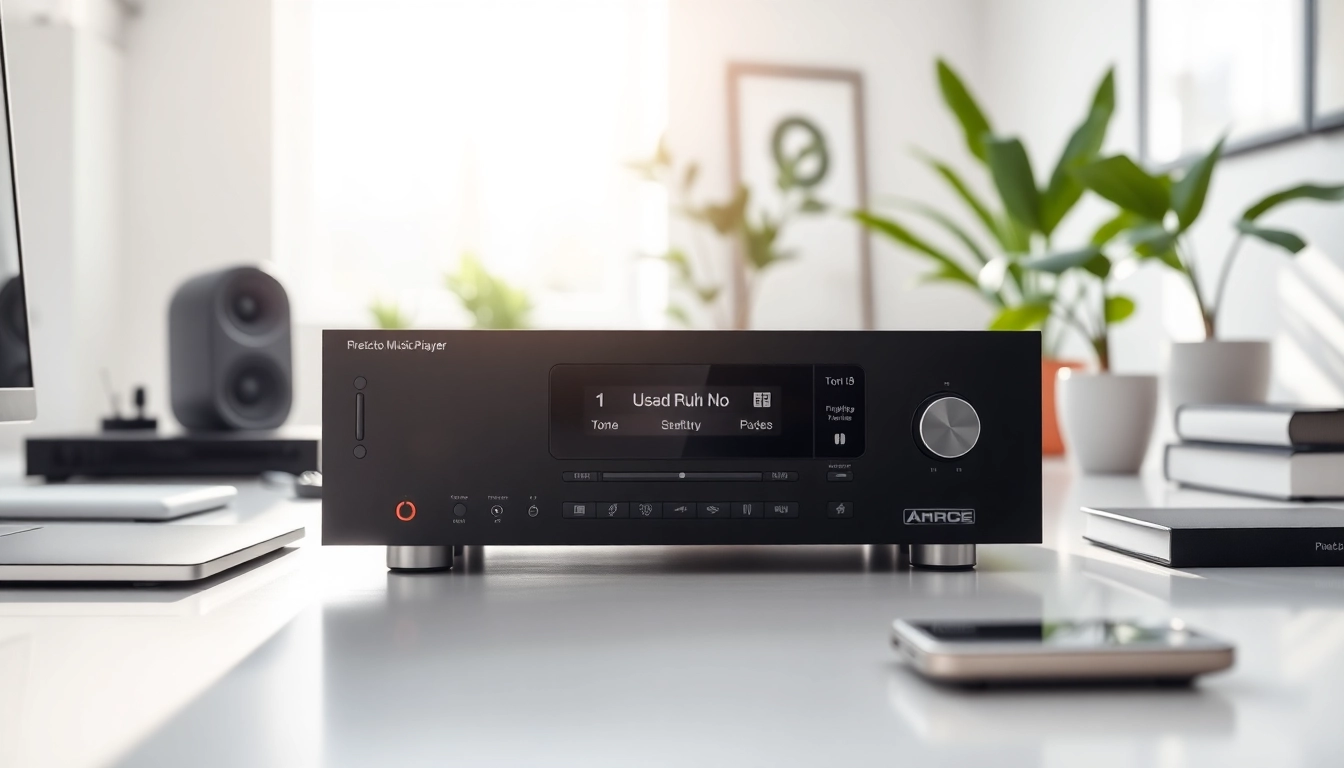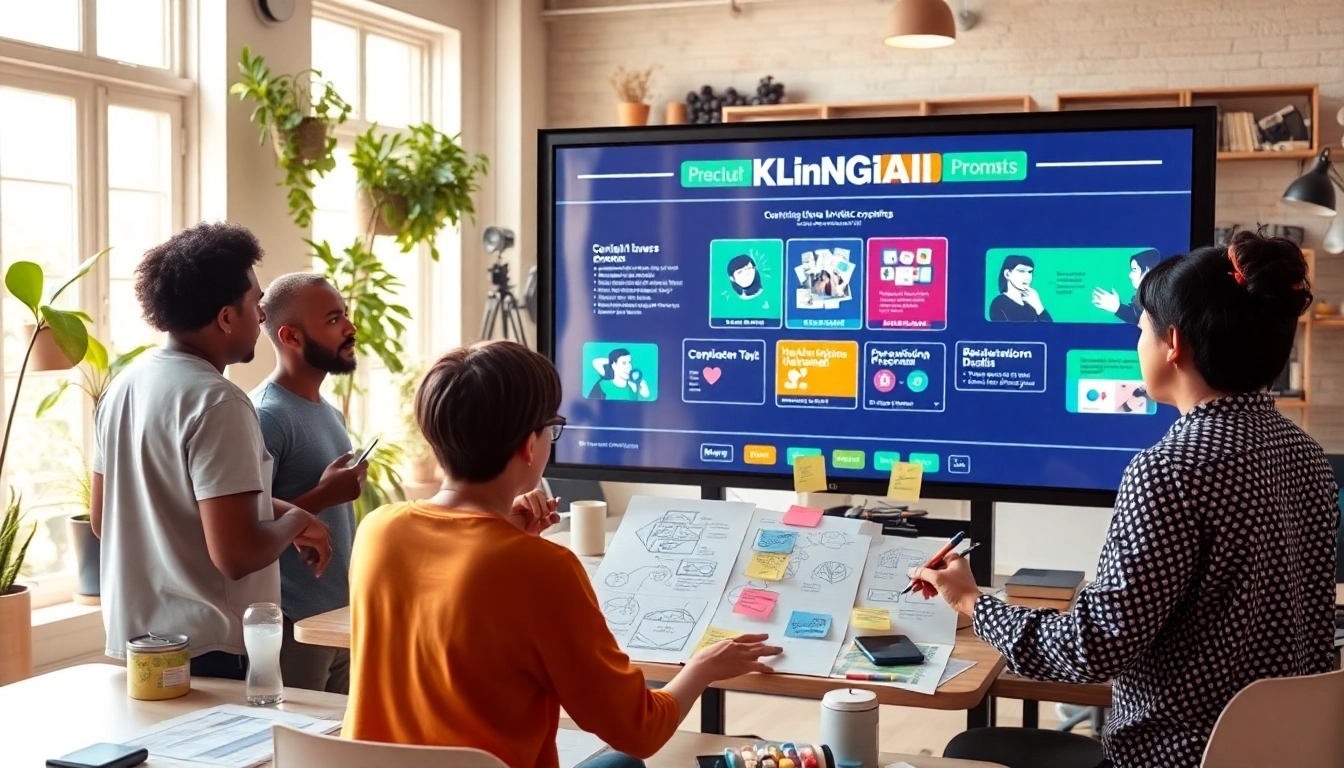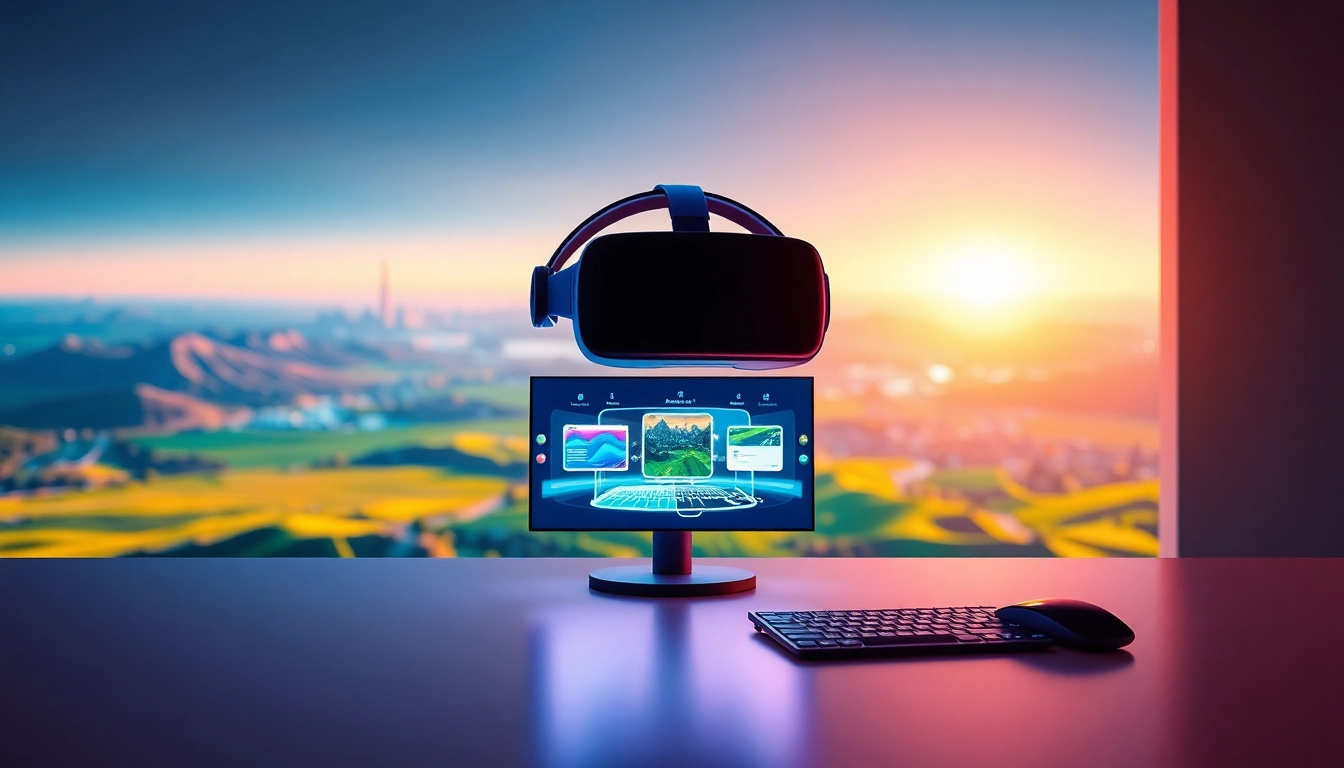Understanding Hardware Players
What Are Hardware Players?
Hardware players are standalone devices designed primarily to play audio and video content without relying on software applications installed on a personal computer or mobile devices. They serve as physical embodiments of multimedia playback, with essential features that enable users to store and stream content seamlessly. In a world where streaming services dominate, hardware players offer a tangible solution for listening to music and watching videos with consistent performance. Unlike typical streaming devices, hardware players emphasize portability, ease of use, and offline capabilities.
Core Benefits of Using a Hardware Player
The appeal of hardware players lies in several core benefits they provide:
- Portability: Many hardware players are compact and lightweight, making them ideal for on-the-go experiences. Users can easily carry them in a bag or pocket.
- Offline Functionality: Unlike many software solutions, hardware players often allow for offline playback, meaning users can listen to their favorite tracks without an internet connection.
- Ease of Use: With intuitive interfaces and minimal setup requirements, hardware players are generally user-friendly. This accessibility attracts both tech-savvy users and those less comfortable with technology.
- Enhanced Audio Experience: These devices are typically optimized for sound quality, delivering a rich audio experience that integrates well with external audio equipment like headphones and speakers.
- Compatibility: Many hardware players boast wide compatibility with various file formats and streaming services, allowing users to enjoy a diverse range of media without hurdles.
How Hardware Players Differ from Software Alternatives
While software alternatives rely on applications installed on a wide range of devices, hardware players are dedicated machines with specialized components that enhance their performance. Here are some key distinctions:
- Performance: Hardware players often deliver better performance and reliability, as they are built specifically for multimedia tasks, unlike general-purpose devices.
- Battery Life: Many hardware players feature optimized battery management; thus, they often last longer during use compared to software alternatives on smartphones and tablets.
- User Interaction: Hardware players can provide physical buttons or dials for control, enhancing user experience by allowing tactile feedback that touchscreen interfaces lack.
- Integrated Hardware: These devices typically have dedicated audio hardware that enhances playback quality, whereas software players rely on the hardware of host devices, which may not always be optimized for audio.
Essential Features of Effective Hardware Players
Audio Quality: What to Look For
Audio quality is a crucial factor when choosing a hardware player. The quality of sound generated can significantly impact the overall user experience. When selecting a device, consider the following:
- Audio Formats Supported: Ensure the player supports various audio formats, including lossless formats like FLAC for high-fidelity playback.
- Digital-to-Analog Converter (DAC): A high-quality DAC is essential for converting digital audio signals into analog ones effectively, ensuring clear and rich sound.
- Amplification: Some devices have built-in amplifiers that enhance sound levels without distortion, which is particularly beneficial for high-impedance headphones.
Storage Capacity: Choosing the Right Size
Storage capacity is another vital consideration. The ideal size depends largely on how you plan to use your hardware player:
- Listening Habits: If you’re a casual listener who enjoys streaming, a smaller capacity may suffice. However, audiophiles or users with extensive libraries should consider devices with larger storage options.
- Expandable Storage: Look for players that support expandable storage through SD cards or USB drives. This feature allows additional music and media storage without having to replace the device.
- Cloud Integration: Some players offer cloud storage options, enabling users to access vast libraries of music without needing extensive onboard storage.
Compatibility: Ensuring Your Player Connects
A comprehensive compatibility profile is essential for any hardware player. Seek features that ensure seamless connections to your existing devices and services:
- Wi-Fi and Bluetooth: Most modern hardware players should offer Wi-Fi and Bluetooth capabilities for easy syncing with smartphones, tablets, and other devices.
- App Integration: Look for devices that allow integration with popular streaming services for an enhanced user experience, making it easier to access music libraries.
- File Format Compatibility: Check which audio and video formats the player supports to ensure smooth playback of your media files.
Setting Up Your Hardware Player
Unboxing and Initial Setup Tips
Setting up your hardware player can be an easy and straightforward process. Follow these unboxing tips to ensure you get started on the right foot:
- Inspect the Items: Upon opening the packaging, confirm that all items, including cables and adapters, are present and undamaged.
- Read the Manual: Spend a few minutes reading through the manual to familiarize yourself with the controls and features. It contains crucial information that can prevent setup errors.
- Charge the Device: Before the first use, charge your hardware player fully or for an adequate time to ensure it operates without interruption during setup.
Connecting to Devices and Apps
Once your hardware player is set up, you will want to connect it with various devices and applications. Here are the primary steps:
- Device Connections: Use the included cables to connect your hardware player to speakers or headphones. Ensure all connections are secure to prevent audio issues.
- Wi-Fi Setup: Access the settings menu on your device to connect to your Wi-Fi network, enabling smooth streaming and app integration.
- App Synchronization: For devices that have mobile apps, download them and follow the setup instructions to link your hardware player with your accounts.
Optimizing Settings for Best Performance
To ensure you get the best performance from your hardware player, consider adjusting settings as follows:
- Audio Settings: Depending on the listening environment, customize bass, treble, and other audio settings for optimal sound.
- Battery Management: Enable power-saving modes or settings if available to prolong battery life during usage.
- Quality Preferences: If streaming, choose your audio quality settings in the app to match your bandwidth and listening preferences.
Real-World Applications of Hardware Players
Using Hardware Players for Casual Listening
Casual listeners can benefit immensely from hardware players. Rather than relying on smartphones with apps, a dedicated hardware player allows for easier access to a curated music experience:
- On-the-Go Listening: Ideal for travel, exercising, or commuting, hardware players can store extensive playlists, ensuring continuous music enjoyment.
- User-Friendly Interfaces: With simple controls designed for quick access to functions, casual listeners can easily navigate their music without technical hassles.
Professional Uses in Creative Fields
In creative fields, hardware players hold significant value. Musicians, content creators, and audio engineers can leverage these devices for various applications:
- Sound Testing: For sound engineers, hardware players provide a controlled environment for testing audio mixes and mastering tracks at high fidelity.
- Content Playback: In video production, hardware players are employed for pre-production playback of soundtracks, enhancing workflow and collaboration.
- Performance Equipment: Many artists utilize hardware players in live performances to trigger tracks and manage playlists seamlessly.
Benefits for Educational Environments
Educational institutions can also leverage hardware players for classroom learning and engagement:
- Interactive Learning: Hardware players can facilitate music education by providing students a platform to learn listening skills and music theory effectively.
- Language Learning: Utilizing hardware players to play audio lessons or language materials makes learning more accessible and less stressful than relying on computer screens.
- Group Activities: In a group settings, multiple hardware players can be synchronized, allowing students to work collaboratively on audio production projects.
Future Trends in Hardware Player Technology
Emerging Features to Watch For
The future of hardware players promises innovations that enhance user experience and broaden capabilities:
- Smart Features: Integration with AI for tailored recommendations and voice-activated controls might soon be standard in upcoming models.
- Advanced Connectivity: Enhanced connectivity features like 5G support may allow for real-time audio streaming with minimal lag.
- Customizable Interfaces: Future models could introduce user-customizable settings that optimize audio playback for specific genres or environments.
Integration with Smart Home Systems
As smart home technology continues to evolve, hardware players are anticipated to integrate seamlessly within these ecosystems:
- Unified Control: Integration with smart home assistants will allow users to control playback through voice commands or centralized smart control systems.
- Multi-Room Audio Capability: Future hardware players may feature built-in support for multi-room audio setups, creating a cohesive listening experience throughout the home.
The Role of Hardware Players in Streaming Services
In the context of streaming, hardware players will likely play a pivotal role as services continue to refine audio delivery:
- Offline Streaming: With more emphasis on offline playback, hardware players provide users with the ability to download content and listen without a data connection.
- Quality Enhancements: Expect to see streaming services optimize their compatibility with hardware players, ensuring users experience the best possible audio quality.
- Loyalty Features: Hardware players linked to specific streaming services may offer unique features that enhance user loyalty and engagement, creating ecosystems where users feel more connected.
In conclusion, hardware players offer a myriad of benefits that cater to diverse user preferences, from casual listeners to professionals in creative fields. Understanding their features, capabilities, and potential impacts can make a significant difference in how users approach audio enjoyment and media consumption in the modern digital landscape. For those interested in exploring detailed guides and information about hardware players, visit https://hardwareplayer.com.















Leave a Reply